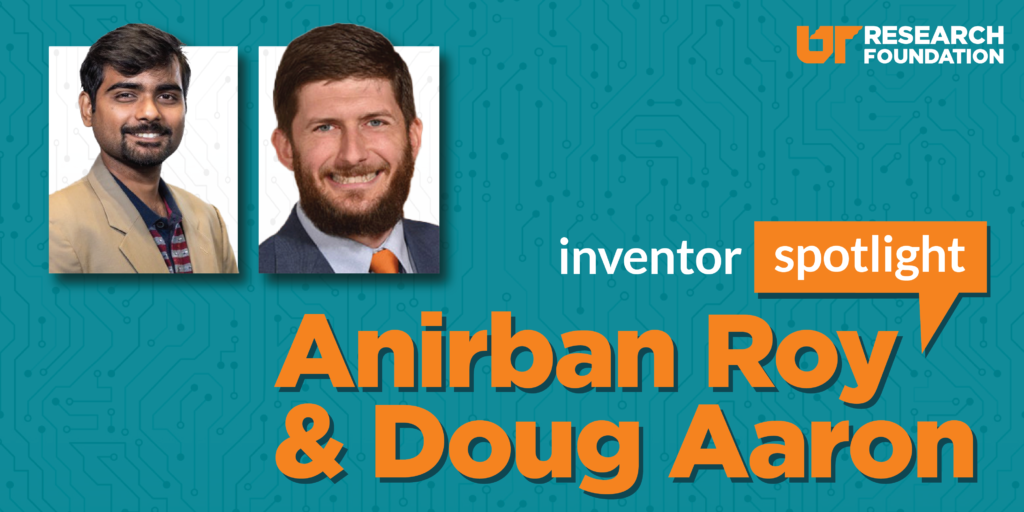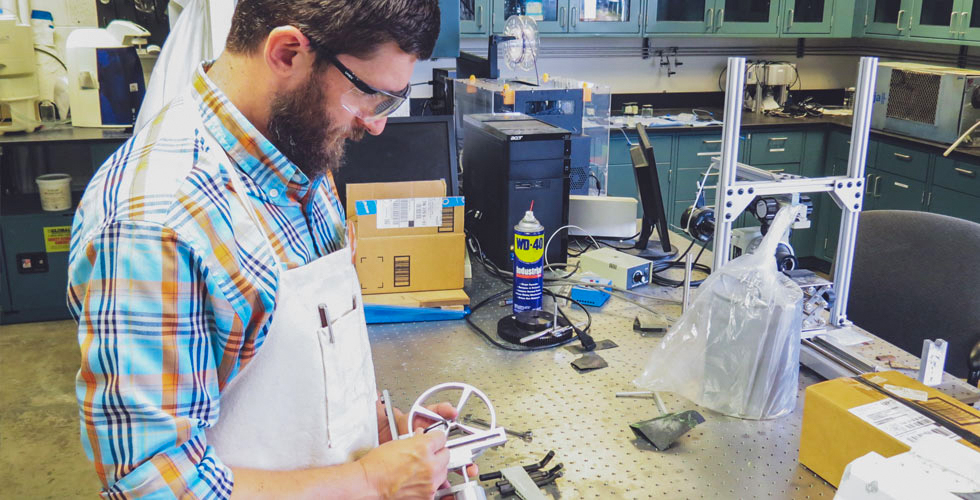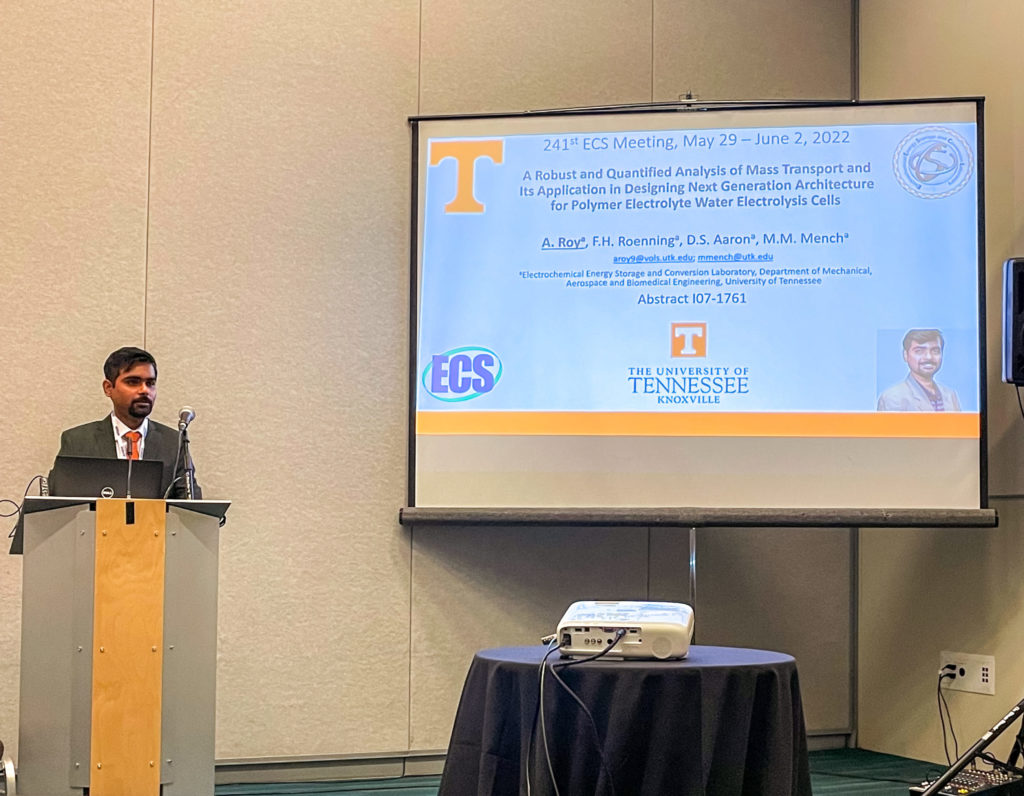UTK Tickle College of Engineering researchers secure grant for technology that makes hydrogen production more efficient, cost effective

A significant challenge with the commercialization of university technology is that many brilliant student researchers are not familiar with the variety of entrepreneurial opportunities available to them. The University of Tennessee Research Foundation seeks to solve this issue by enabling more UT students to transition their innovative research out of the lab and into the marketplace.

A recent example of this mission is the notable work of researchers Anirban Roy and Doug Aaron from the Mench Group in UT’s Department of Mechanical, Aerospace and Biomedical Engineering (MABE). Roy, a third-year doctoral student, works with Aaron, assistant department head for undergraduate programs and research assistant professor. They collaborated with researchers from the UT Space Institute to develop novel-architecture electrodes that enable more efficient, low-cost hydrogen production via water electrolysis.
This spring, UTRF Technology Manager Gregory Sechrist shared the opportunity for Roy to pitch his technology at the Mid-South Innovation Hub during the Experiment to Enterprise Program. There, Roy secured a Thesis Commercialization Enhancement grant, which has enabled him to begin exploring the technology’s commercial potential, attend regional NSF I-Corps programming, market his technology to companies and apply to the National I-Corps Program.

UTRF is proud to provide assistance and resources to all faculty, staff and students across the UT System,” said UTRF Vice President Maha Krishnamurthy. “We want to see UT innovations succeed and their creators make a name for themselves both in their field and in their communities.”
Aaron and Roy discovered their technology at the Electrochemical Energy Storage and Conversion Laboratory (EESC), led by Matthew Mench, Dean of the Tickle College of Engineering.
To generate hydrogen in an electrolyzer, an electrical current separates water into oxygen and hydrogen. Roy and Aaron’s novel technology pairs with a UTSI technology, a novel diffusion medium created by Feng-Yuan Zhang, Professor in MABE, to make this process even more efficient.
We’re trying to quickly get water in and oxygen out of the system. Our architecture enhances that transport so that we can get the best performance from the often-expensive catalysts in these systems,” said Aaron. “The way I think about this technology is that Zhang’s material is the heart. It is a strong heart, but it needs our architecture around it to unlock its fullest potential and really shine.”
Both Roy and Aaron are grateful for UTRF’s support with their technology and encouraging Roy to sign up for the competition. “UTRF has a mission to help transfer technology from the ideas we develop. It’s probably a little difficult at times to get researchers to do what they need to do to support that process, but everyone has been very energetic in staying with us,” said Aaron. “They are very good at wrangling engineers and getting us to improve the way we communicate our ideas. They have been fabulously supportive..”
UTRF should keep doing what they’re doing,” said Roy. “They’re phenomenal. It’s hard for anyone starting out in the science realm to have an idea of who to approach, how to communicate and what are the legal ramifications of your work. They’re always there to help.”